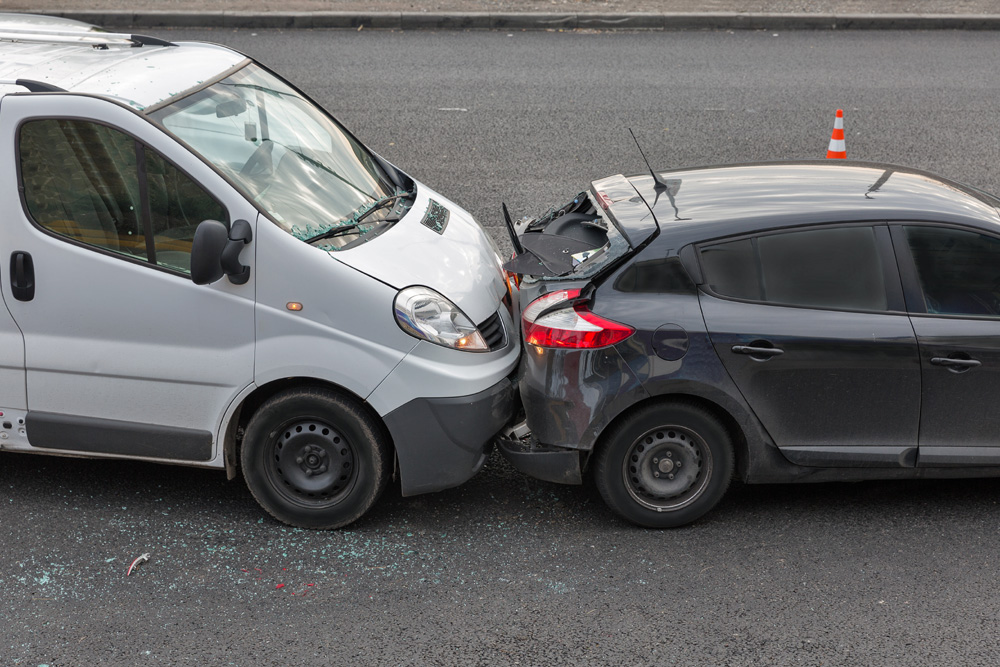Rear-end collisions are among the most common types of car accidents and motor vehicle crashes in Austin and elsewhere. A widely held misconception is that these crashes do not result in serious injuries. While it is true that rear-end crashes often do not cause as much property damage to vehicles as other types of car accidents, the injuries that victims suffer in motor vehicle accidents are usually highly painful and expensive to treat.

Seeking compensation for one’s injuries and other losses after a rear-end collision can be a headache, too. This is especially true if you have never dealt with an insurance claim for severe injury before or with the Texas civil justice system. You will need an Austin personal injury attorney’s assistance, so we encourage you to reach out to Byrd Davis Alden & Henrichson LLP for help.
What ‘Invisible Injuries’ Occur in a Rear-End Car Wreck?
Not all injuries you suffer in a car accident are immediately apparent, meaning you might suffer hidden or latent injuries. For this reason, you may fail to seek immediate medical attention directly after your rear-end accident. However, you would be wrong to do so.
Some injuries are “invisible.” They may not become apparent until a few days following the traumatic event of your accident. This is why you should always get checked for injuries as soon as possible after a car accident of any type, including a rear-end collision.
Back Injuries
Many people will report back pain after being involved in a rear-end collision. According to the health and injury site MedlinePlus, common car accident injuries relating to the back include the following:
- Sprains and strains
- Herniated discs
- Fractured vertebrae
A common trait or symptom of these injuries is pain. If you have lower back or neck pain after being rear-ended, it could be a sign of a more serious injury. You should seek medical care immediately.
Neck Injuries and Whiplash
Another common type of head injury sustained in a rear-end collision, which may not have any obvious symptoms, is whiplash. This injury occurs when the neck and head are rapidly forced backward and forward, creating a snapping motion (much like the snap of a whip, hence the injury’s name). According to the Mayo Clinic, symptoms of whiplash include:
- Pain in the neck and neck stiffness
- Deceased range of motion in the neck
- Headaches
- Tenderness in the shoulders or upper back
- Dizziness
- Fatigue
- Tinnitus
- Memory problems
- Irritability
- Sleep disturbances.
If you notice any headache symptoms or changes in mood after a car accident, it could be a sign of a whiplash injury or even of a mild traumatic brain injury (TBI). Migraines or post-traumatic headaches after a car wreck could also be a sign of a more serious problem.
Traumatic Brain Injury
A concussion is the most common type of traumatic brain injury (TBI). This injury involves symptoms such as changes in emotion, confusion, dizziness, loss of consciousness, trouble sleeping, extreme fatigue, amnesia, listlessness, dilated pupils, slurred speech, nausea, vomiting, loss of balance or coordination, and sensitivity to light or sound.
If a serious post-concussion syndrome or other TBI type is not diagnosed and a patient is not given adequate medical treatment, a victim may be at greater risk of permanent and irreversible harm.
Again, even if you do not think that you have been injured in a rear-end collision, you should go to the hospital to get checked out. You should not assume that you are fine unless a doctor gives you a clean bill of health.
How to Find Medical Help After a Car Accident
If you need assistance finding a medical provider after a car accident caused by someone else, we can help. Doctors may be less interested in helping accident victims or patients who are involved in related legal matters, but you don’t need to search alone.

When you call Byrd Davis Alden & Henrichson LLP, we can help you walk through your options or provide a referral to a provider we already trust. We can also help you in many additional ways, such as determining what evidence you should collect, speaking on your behalf, and calculating the compensation you can receive from your claim.
Why Should You File a Claim After a Rear-End Crash?
Another reason that a rear-end collision can result in a headache is this: Fault may be disputed. While the rear driver is usually assumed to be at fault, this is not always the case.
If you believe that the crash was the fault of the other driver, you should file a claim for damages. Because of Texas’ at-fault laws, the at-fault driver’s insurance company would be responsible for paying for your damages, including any property damage to your vehicle, your medical bills, lost income, pain and suffering, and more.

If the fault of a motor vehicle collision is disputed, you would need to prove the other driver’s fault by collecting evidence and building a strong case. Types of evidence that can be used to hold the other driver liable for damages include:
- Witness testimony
- Photos
- Video evidence
- Analysis by accident reconstruction experts.
If the other driver caused the crash, be sure to file your claim as soon as possible. Waiting too long to take action may result in your claim being time-barred.
How Can a Lawyer Help You After a Rear-End Accident?
In many cases, those who are involved in a rear-end collision do not take immediate action. They fail to seek prompt medical attention or file a claim as soon as possible after an accident occurs. This may be because they assume that the accident is not a big deal and no severe injuries were suffered.
However, later on, the victim may discover that they have whiplash, a concussion, a back injury, or another latent severe form of bodily harm. When this happens, filing a claim and obtaining damages can be more difficult. In some cases, it may be too late.
Even if you seek medical care and report the auto accident to the auto insurance company afterward, disputes can arise concerning fault and paying for damages.

Your accident attorney from Byrd Davis Alden & Henrichson LLP can help you establish fault and seek compensation for your injuries and other losses. If a fair settlement cannot be reached, your attorney can take your case to court and litigate on your behalf.
Contact Our Austin Car Accident Lawyers Today
Rear-end collisions can cause significant headaches and chronic pain for those involved, both literally and figuratively. These types of accidents often result in whiplash, traumatic brain injuries, and other severe conditions that may not manifest immediately but can lead to long-term health complications. At Byrd Davis Alden & Henrichson LLP, we know what you are going through after a car wreck. We understand that you need answers to your tough questions about how to pursue compensation.
We will work hard to give you accurate and knowledgeable answers and work with you to build a strong case. If you’ve been involved in a rear-end collision, don’t let the stress and confusion overwhelm you. Contact Byrd Davis Alden & Henrichson LLP today to discuss your case with our experienced personal injury attorneys. We offer a free consultation to evaluate your situation and provide the guidance you need. To learn more, call us at (512) 454-3751 or complete our contact form.


